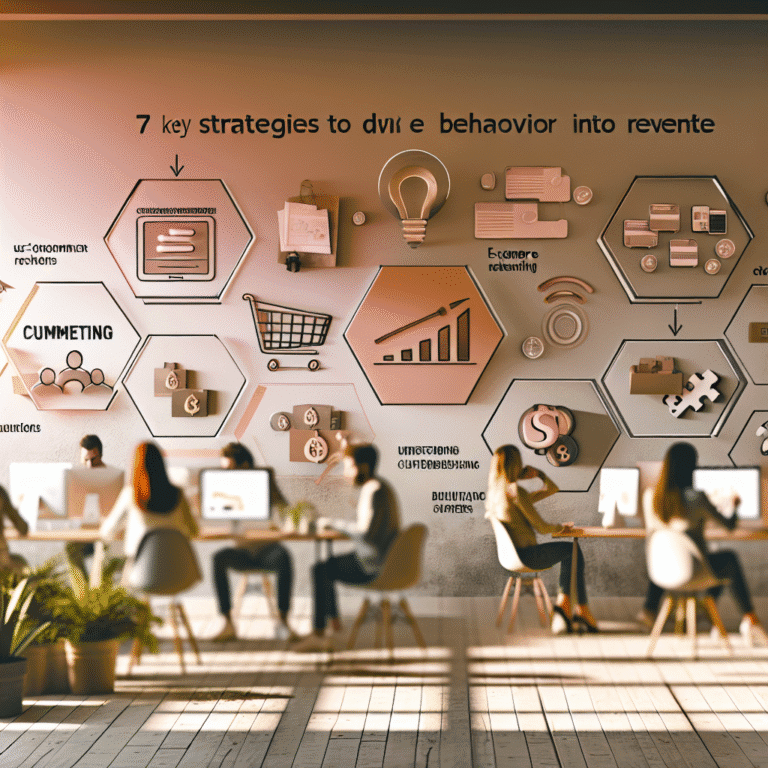Turn Browsers into Buyers with Product Copy That Sizzles
You've polished up your website to a fine shine and your checkout process glides like a swan on a lake. Yet, people aren’t taking the bait. What’s the snag? Time to face the bogeyman of online sales: dull as dishwater product descriptions.
We fret over user experience, obsess about button colours like we're mixing paint at Dulux, and then serve damp squib product copy that’s as exciting as reading a washing instruction label. Customers notice, trust me.
A lifeless description is not just flat; it’s a barrier. Consumers who feel unsure or unexcited tend to linger. And that hesitation? It’s a conversion killer—just like a slow-loading page.
Fancy jazzing up your product descriptions to boost those conversions and tempt clicks on that delightful "Add to Cart" button? The secret weapon is understanding behaviour. Let’s dismantle what most ecommerce brands don't notice and see how we can turn it around.
Why Weak Product Descriptions Are Bad for Business
Boring descriptions aren’t just dry—they’re harmful. Most ecommerce product copy is riddled with these problems:
- Focused too much on the product, rather than the customer’s needs.
- Written like the back of a cereal box, with as much personality as a damp towel.
- So generic that they could describe everything from armchairs to umbrellas.
- Lacking any emotional spark or sense of urgency.
Example:
❌ "Infused with retinol and packaged in a 50ml bottle."
Informative? Sure. Alluring? About as enticing as a tax return form.
✅ "Wake up to smoother skin in 10 days—retinol-powered results without the redness."
Now, that line does more than just describe. It paints a picture that’s vivid and reassuring.
Great product descriptions focus on transformation, not tedious lists. Let’s explore the psychology driving such compelling writing.
Understanding the Psychology of Buying
We don’t just buy products, we buy emotions. Tapping into the reasons behind purchasing choices can transform your ordinary product pages into profit-generating powerhouses. Here’s how to leverage this:
1. Avoiding Loss
People are more motivated to avoid losses than to make gains. Create urgency.
“Leave it in your basket today, and welcome frizzy hair again tomorrow.”
2. Leaning on Social Proof
Confidence sells. Allow previous buyers to do the talking and reduce doubt.
“4.9 stars awarded by more than 2,000 happy repeat customers.”
3. Making It Simple
Confusing means risky. Straightforward descriptions help seal the deal.
“Offers 12 hours of power with no overheating, even at full brightness.”
4. Using Anchoring
Show shoppers the value by comparing, not just discussing the price.
“Same power as a £300 blender—for a fraction of the price.”
5. Emphasising Scarcity
Urgency can drive action, but authenticity is key.
“Running low: Only 6 left in charcoal.”
6. Storytelling
Immerse the customer in a story. Allow them to experience post-purchase pleasure from just one line.
“Wear this blazer once and brace for an impressive number of compliments.”
Essential Ingredients of High-Converting Product Descriptions
Time for the nitty-gritty. Here’s what every strong product description needs, with a dash of persuasion, psychology, and a sprinkle of flair.
1. Lead with Benefits, Not Spec Sheets
Focus on what problems it solves.
“A lightweight backpack that fits your laptop, lunch, and gym gear without the bulk.”
2. Use Descriptive Language
Engage the senses. “Soft” is okay. “Marshmallow-soft ribbed cotton”? That’s memorable.
“A plush, cloud-like knit for cosy Mondays.”
3. Speak the Customer’s Language
Use the same words your customers do. Dive into reviews and feedback for inspiration.
“No more midday shine? Count me in for a lifetime supply.”
4. Echo The Brand’s Personality
Your tone should reflect your brand. Be lively, witty, or warm—just not bland.
“Finally, a planner smart enough for your creative genius.”
5. Provide Comparisons
Situate the offer within familiar territory.
“Holds more than your tote, looks more streamlined than your briefcase.”
6. Demonstrate Everyday Use
Help your customer envision using it today—and loving it.
“Your go-to tee for wearing under blazers or rocking solo at brunch.”
7. Address Concerns with Ease
Sooth worries without killing the vibe.
“Machine-washable, because who has time for dry-cleaning?”
8. Hint at Credentialed Approval
You don’t need to blurt sales figures—just enough to suggest, “People love this, too.”
“Picked by over 5,000 pet owners last month.”
9. Add a Time Element
Now grabs attention. Later feels like a chore.
“Order by Thursday; shine by Monday.”
10. End with Emotional Assurance
Remind them how good this purchase will feel.
“Because jeans should hug you, not squeeze you.”
The Secret Sauce: Self-Image
Underneath every purchase is a whisper of identity. When people buy something, they’re aligning with a certain self-image. Nail that in your product descriptions and you’re not just persuading—you’re inspiring identity.
A quick test? Add a compliment.
Option A: “100% biodegradable packaging.”
Option B: “Thoughtful packaging—because your choices matter for our planet.”
Which one hints that they’ve made the responsible choice?
Crocs: From Punchline to Icon
Remember when Crocs were just something to chuckle about? Then they got real. Their product descriptions now blend quirky honesty with practical charm.
“Farm-proof, beach-ready, outrageously comfy.”
They stopped defending their quirks and embraced them. Result? Cult status.
Lesson: A good product description gives permission—to be bold, comfy, stylish, ethical, or just plain clever. Use that.
Wrapping It Up
Crafting product descriptions that convert isn’t just about making words sing. It’s about boosting those vital conversions.
Put yourself in your shopper's shoes just at the point of doubt. What’s going through their head? Hopeful curiosity? Nervous excitement?
Write to those feelings.
When your product descriptions are clear, benefit-driven, emotionally engaging, and smart enough to pull at the mind, you’re not nudging conversions along, you're accelerating them.
Remember:
- Be concise, not boring.
- Be sharp, not unclear.
- Talk to humans, not algorithms.
Great copy doesn’t merely describe—it stirs action.
And your conversion rate, along with your grateful customers, will thank you for it.





